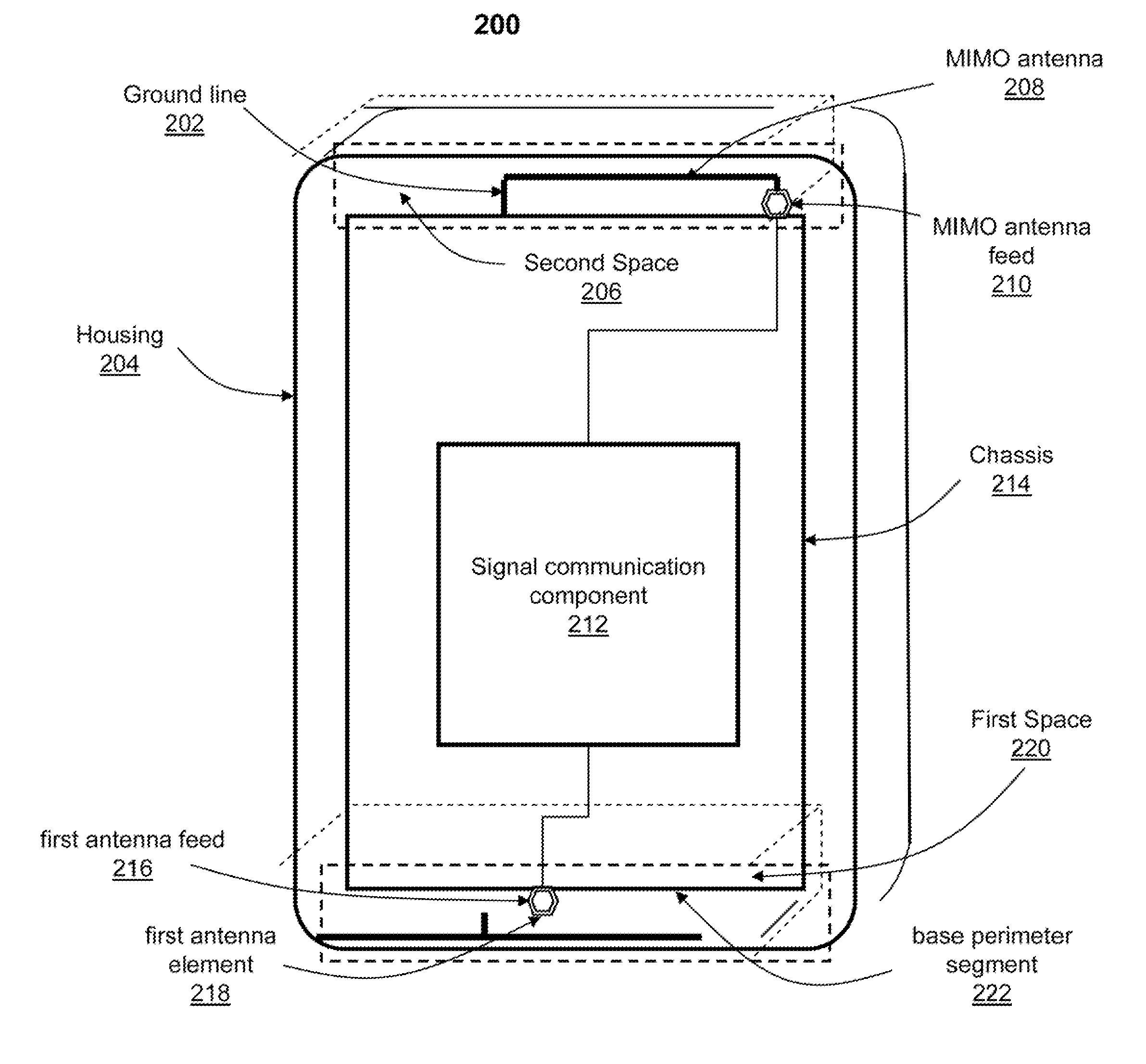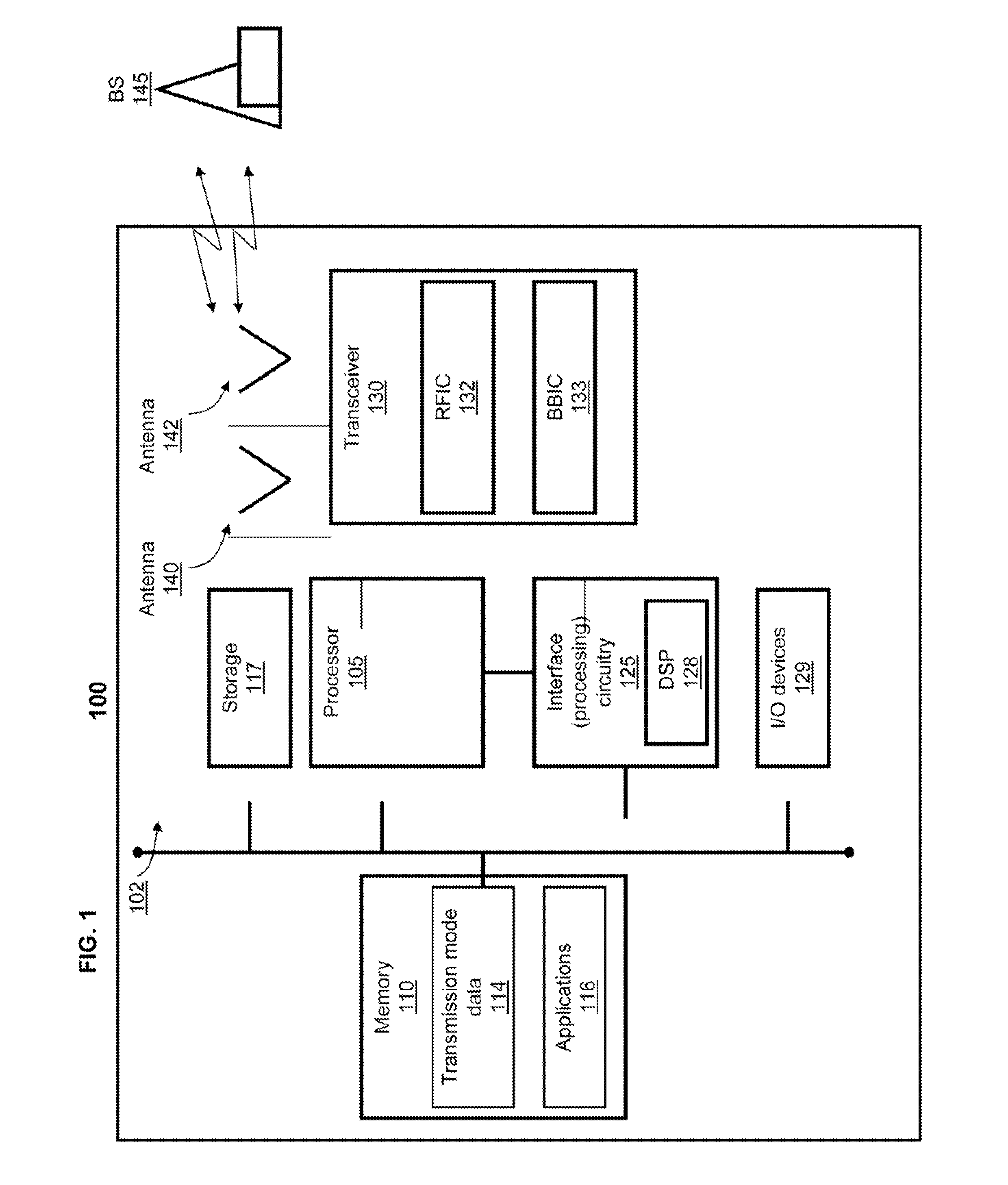Antenna arrangement for 3g/4g svlte and MIMO to enable thin narrow boardered display phones
a thin phone and display phone technology, applied in diversity/multi-antenna systems, independent non-interacting antenna combinations, spatial transmit diversity, etc., can solve the problem that large filters or even smaller filters cannot be packed in a thin phone design, the specific absorption rate is higher, and the receiver is not sensitive enough to the high level of receiver desensitization
- Summary
- Abstract
- Description
- Claims
- Application Information
AI Technical Summary
Benefits of technology
Problems solved by technology
Method used
Image
Examples
Embodiment Construction
[0019]The illustrative embodiments provide a method and system for providing a multiple input multiple output (MIMO) antenna arrangement in a wireless communication device. A first antenna element and a second antenna element co-located within a same antenna volume are respectively coupled to first and second antenna feeds proximate to a base perimeter segment of a device chassis. The first antenna feed is positioned at a pre-calculated distance from the second antenna feed. The second antenna element, designated as a first MIMO antenna, is coupled to an antenna ground positioned proximate to the first antenna feed and at a pre-determined distance from the second antenna feed. A second MIMO antenna is placed proximate to a top perimeter segment of the device chassis. The antenna arrangement achieves (a) low correlation between the first MIMO antenna and the second MIMO antenna, (b) an acceptable or pre-determined level of antenna isolation between the first antenna element and the s...
PUM
 Login to View More
Login to View More Abstract
Description
Claims
Application Information
 Login to View More
Login to View More - R&D
- Intellectual Property
- Life Sciences
- Materials
- Tech Scout
- Unparalleled Data Quality
- Higher Quality Content
- 60% Fewer Hallucinations
Browse by: Latest US Patents, China's latest patents, Technical Efficacy Thesaurus, Application Domain, Technology Topic, Popular Technical Reports.
© 2025 PatSnap. All rights reserved.Legal|Privacy policy|Modern Slavery Act Transparency Statement|Sitemap|About US| Contact US: help@patsnap.com



